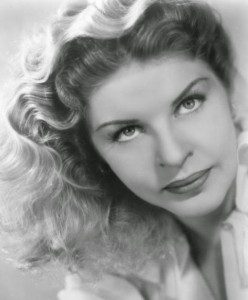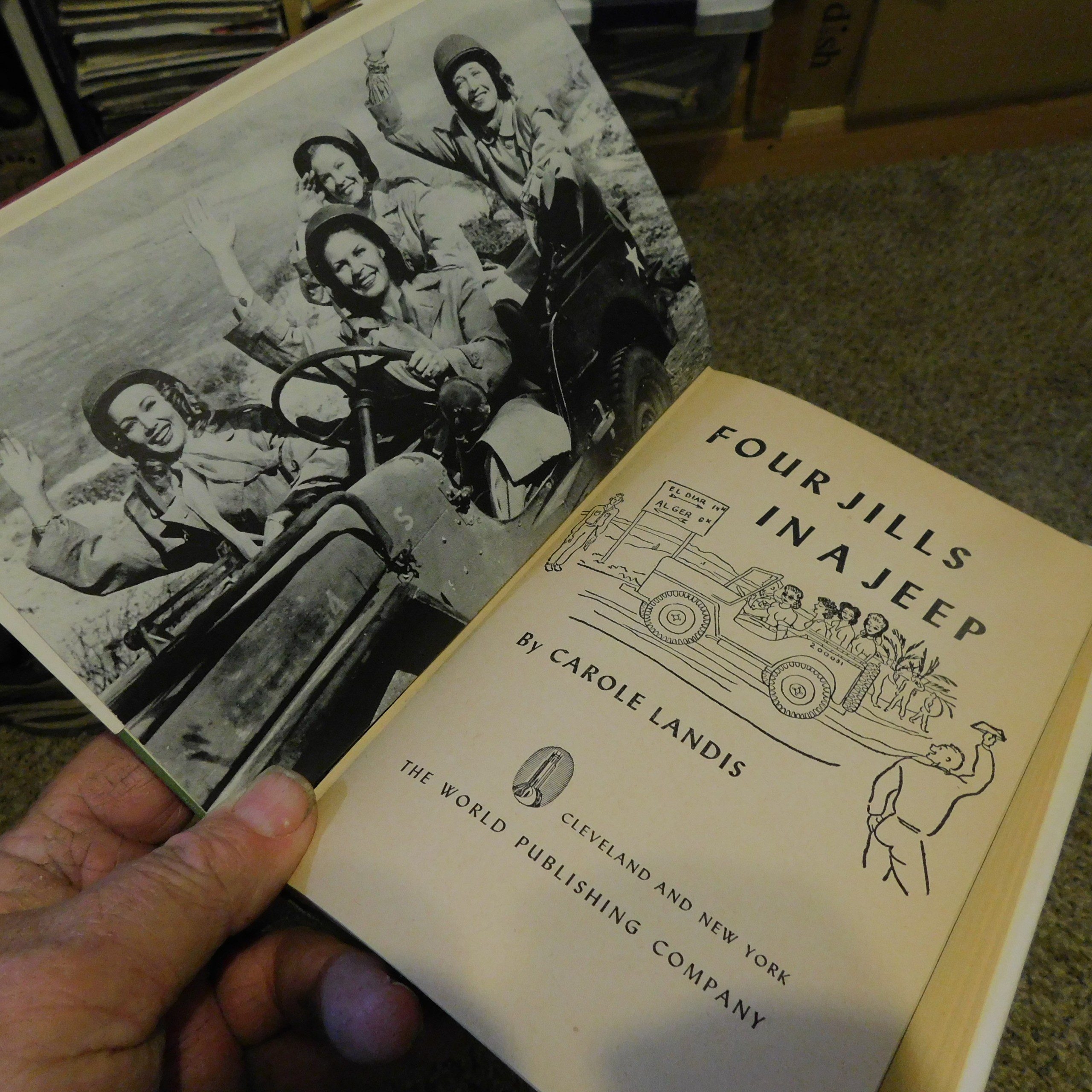
Women’s History Month: ‘Colonel Maggie’ — The inspiring service of Hollywood actress Martha Raye
Looking at the assignment board on my computer here, I see that Women’s History Month is upon us and with that, an opportunity for me to dig through my files and books for a fitting subject.
I sat down and started to look over a lot of material that covers all the great achievements that women have accomplished over the course of military and aviation history. As I write about military subjects, I turned my eye to my massive bookshelves full of military stories and, as always, I looked for subjects that pulled at my heart.
Looking and looking, an old book I have — small in size — grabbed my attention. Printed in 1944 and written by Hollywood starlet Carol Landis, it got me to thinking about one of the stars of the movie that was made from the book. Four Jills in a Jeep was billed as a rollicking adventure of four Hollywood stars who entertained the troops during World War II in Bermuda, England and Africa. Carol Landis, Mitzi Mayfare, Martha Raye and Key Francis were the USO girls who hit the road to raise the spirits of American soldiers all over the world.

One of these women probably never realized at the time that, as that Hollywood starlet, she would become a legend in the ranks of the military and would serve and entertain American GIs for three wars — and all the moments in-between.
Martha Raye hit Hollywood at the perfect time and her talent was noticed right away by studio execs and other actor-comedians. Her good looks and witty humor made her the perfect actress to fill the roles in films that were being produced just before World War II. Blessed with a voice that also set her apart, you could always tell who was speaking the dialog or singing the songs when Martha was sharing her talent.
Four Jills in a Jeep was not a project of fiction. Carol Landis wrote the book from a diary she kept when these ladies actually toured the military bases to entertain troops, and they played themselves in the film adaptation. Martha was the rock of the group and Carol said from the very start of the tour, she never faltered once. When the time came to pack it in and head back to the States, Martha requested to press on alone and entertain the troops as a solo artist. She continued in that calling until the end of her life.
When Martha returned to Hollywood after the war, she was a changed woman, as she had developed a fond affection and great respect for the service man who would put his life in danger for the benefit of others. She started the process of morphing in her Hollywood career and focusing her talents toward the needs of the military. When the next round of trouble showed up in Korea, Martha was ready to go. In all types of weather and locations, Martha made the troops laugh and forget about their struggles, while all the time building a bond that just continued to grow and inspire her. She always wanted to do more as she moved past the Hollywood actress/ sweetheart title and she started to become the GI’s mother, who made them feel at home in foreign lands.
When Vietnam showed up in the 1960s, Martha had become the full hands-on entertainer, whose commitment to the troops did not end when she left the stage. She could also be found in the hospital wards and operating rooms performing the tasks of the medics, never once wavering from attending the soldiers no matter how horrific their condition was. Martha loved her American boys and would serve them in whatever manner it took, from making them laugh to helping to save their lives.

Never one to shy away from danger, one of the most amazing stories about Martha was told by a soldier who had a unique introduction to Martha and witnessed, first-hand, what she was capable of in the most trying of times. Here in his own words from the Army Aviator, is the way he remembered the Martha the soldiers loved:
“It was just before Thanksgiving ‘67 and we were ferrying dead and wounded from a large GRF west of Pleiku, Vietnam. We had run out of body bags by noon, so the Hook (CH-47 Chinook) was pretty rough in the back.
“All of a sudden, we heard a ‘take-charge’ woman’s voice in the rear. There was the singer and actress, Martha Raye, with a SF (Special Forces) beret and jungle fatigues, with subdued markings, helping the wounded into the Chinook, and carrying the dead aboard. ‘Maggie’ had been visiting her SF ‘heroes’ out ‘west’.
“We took off, short of fuel, and headed to the USAF hospital pad at Pleiku. As we all started unloading our sad pax’s, a ‘Smart-Ass’ USAF Captain said to Martha, Miss Ray, with all these dead and wounded to process, there would not be time for your show!
“To all of our surprise, she pulled on her right collar and said, ‘Captain, see this eagle? I am a full ‘Bird’ Colonel in the U.S. Army Reserve, and on this is a Caduceus, which means I am a nurse with a surgical specialty. Now, take me to your wounded.’ He said, ‘Yes ma’am, Follow me.’
Several times at the Army Field Hospital in Pleiku, she would ‘cover’ a surgical shift, giving a nurse a well-deserved break.”
Amazing to think that Martha Raye had a lifelong fear of flying. After all the thousands of miles she racked up, my respect for her grew even more, thinking that making the trip was more important than surrendering to the fear.
One of the real affections of Martha was the Green Beret’s and she always let it be known that they were her special boys. She would fly out to forward bases to visit them, allowed to do so because she was an honorary lieutenant colonel in the Army reserves. She was also an honorary Green Beret and visited U.S. Army Special Forces in Vietnam without fanfare. Registered nurse Lt. Col. Martha helped out when things got bad in Special Forces A-Camps. She was affectionately known by the Green Berets as “Colonel Maggie.”
Martha Raye in her life won much praise from those in the military and from Hollywood, but Martha later said her Hollywood career took a hit and she was blacklisted for having a conservative, pro-military stance during the Vietnam war. To an interviewer in 1984, she stated, “I believe in the Constitution, strength in national defense, limited government, individual freedom, and personal responsibility. They reinforce the resolve the United States is the greatest country in the world, and we can all be eternally grateful to our founding fathers for the beautiful legacy they left us.”

At the end of her life, Colonel Maggie was finally recognized for her amazing contributions to our country and its soldiers, as she was awarded the Presidential Medal of Freedom. As she was too sick to travel, a detachment of Green Berets traveled to her Bel Air home and presented it to her, on behalf of the President of the United States.
The one last gesture that we can all agree was appropriate is that after her passing, she received an honor reserved for very few: upon her death it was requested that she be buried with full military honors in the Fort Bragg Main Post cemetery at Spring Lake, N.C., home of her loving and beloved United States Army Special Forces. The Fifth Special Forces Group (Airborne) also made her an honorary Green Beret, for her USO work in Vietnam. Martha Raye is the only woman buried in the SF (Special Forces) cemetery at Fort Bragg. I’m sure she would cherish this honor more than the two stars she has on the Hollywood Walk of Fame.
Martha Raye is not the first name you think would come up as we celebrate the great women of history, but she was an inspiration to generations of Americans. She got her compassion and determination as a member of the Greatest Generation and shared her talents in so many ways with generations that followed. One of her best quotes is, “I didn’t have to work till I was three. But after that, I never stopped.” We are grateful for that, Martha.
Colonel Maggie, you are still loved and not forgotten and as long as we have the ability to share your story, we will do so in the hopes that it will inspire the next Martha that will pick up where you left off. We salute you.
Until next time, Bob out!
